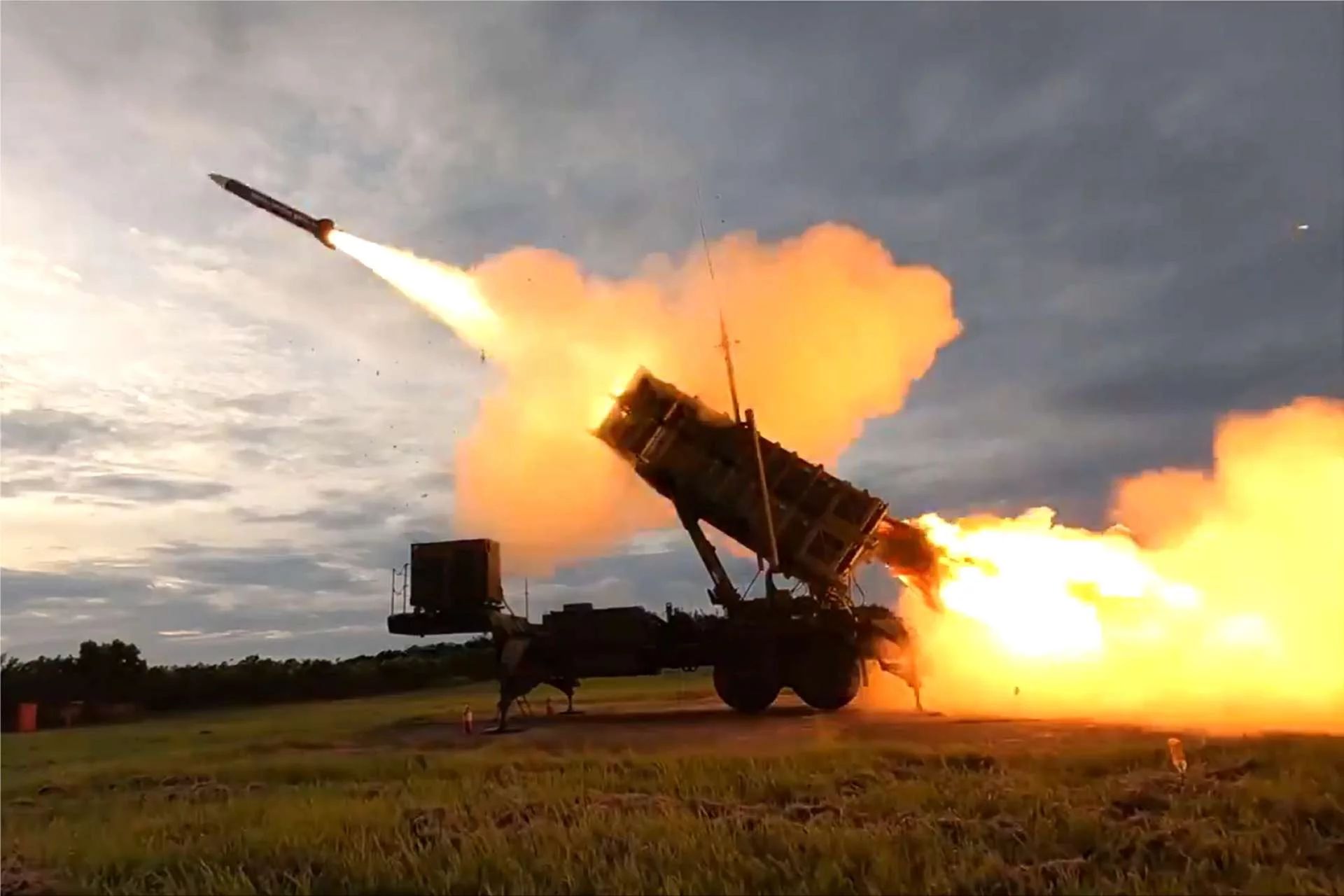
In a clear demonstration of its commitment to defense readiness, Taiwan conducted a large-scale military exercise at the Jiupeng military base in Pingtung County. The exercise featured successfully launching two U.S.-made Patriot PAC-2 missiles alongside locally developed Sky Bow III anti-ballistic missiles, hitting targets approximately 30 kilometers off Taiwan’s eastern coast.
Show of Force During Escalating Pressure
This exercise comes against a backdrop of escalating tensions with China, which claims Taiwan as a breakaway province. Beijing has intensified its military activities around the island, including frequent incursions by warplanes and naval vessels near Taiwan’s coast, prompting concerns about a potential invasion.
Colonel Kao Shu-li, the spokesperson for the exercise, stated that the training aimed to test the effectiveness of the weapon systems and the soldiers in a joint air defense scenario. The decentralized command model employed during the exercise highlighted Taiwan’s focus on improving responsiveness and coordination of forces in potential conflict situations.
PAC-2 Missiles: A Key Component of Taiwan’s Defense Strategy
Strengthening Defense Capabilities Through Diversification
Taiwan’s utilization of the PAC-2, supplied by the United States, underlines its strategy of diversifying its weapon systems. This approach combines procuring advanced military equipment from allies, particularly the United States, with bolstering its domestic arms industry. The recent announcement of a 6% increase in the defense budget for 2025, bringing it to 647 billion Taiwanese dollars (approximately 19.8 billion U.S. dollars), reflects Taiwan’s commitment to strengthening its defenses.
Transparency and International Messaging
The recent exercise marked a significant departure from previous practices, with the Ministry of Defense inviting the press to witness the live-fire demonstration. This increased transparency, a first in twelve years, is interpreted as a deliberate effort to reassure the Taiwanese population and send a strong message to the international community about Taiwan’s resolve to defend its sovereignty.
Ministry of Defense spokesperson Sun Li-fang emphasized the importance of the exercise in verifying the effectiveness of the weapons systems and the robust training of the soldiers. The simulated combat conditions under which the missile launches were conducted served to validate the operational capabilities of Taiwan’s armed forces.
Deterrence and Diplomacy: A Two-Pronged Approach
As China continues to assert its claim over Taiwan, the island nation is pursuing a multifaceted strategy that combines strengthening its military capabilities with active diplomacy. The recent exercise serves as a powerful reminder of the tense geopolitical situation and underscores Taiwan’s determination to deter any attempt by China to take control by force. Alongside military preparedness, Taiwan is actively engaging with unofficial allies like Japan and South Korea to solidify its international support network.
A Future Defined by Uncertainty
The recent military exercise, showcasing Taiwan’s advanced defense capabilities, highlights the island’s commitment to safeguarding its autonomy. While the future remains uncertain, one thing is clear: Taiwan is preparing to defend its sovereignty in the face of growing pressure from China. The balance of power in the region remains delicate, and the world watches closely as Taiwan continues to navigate the complex geopolitical landscape. The live-fire launch of the PAC-2 missiles serves as a powerful symbol of Taiwan’s unwavering commitment to self-defense and its determination to secure a future free from coercion.
